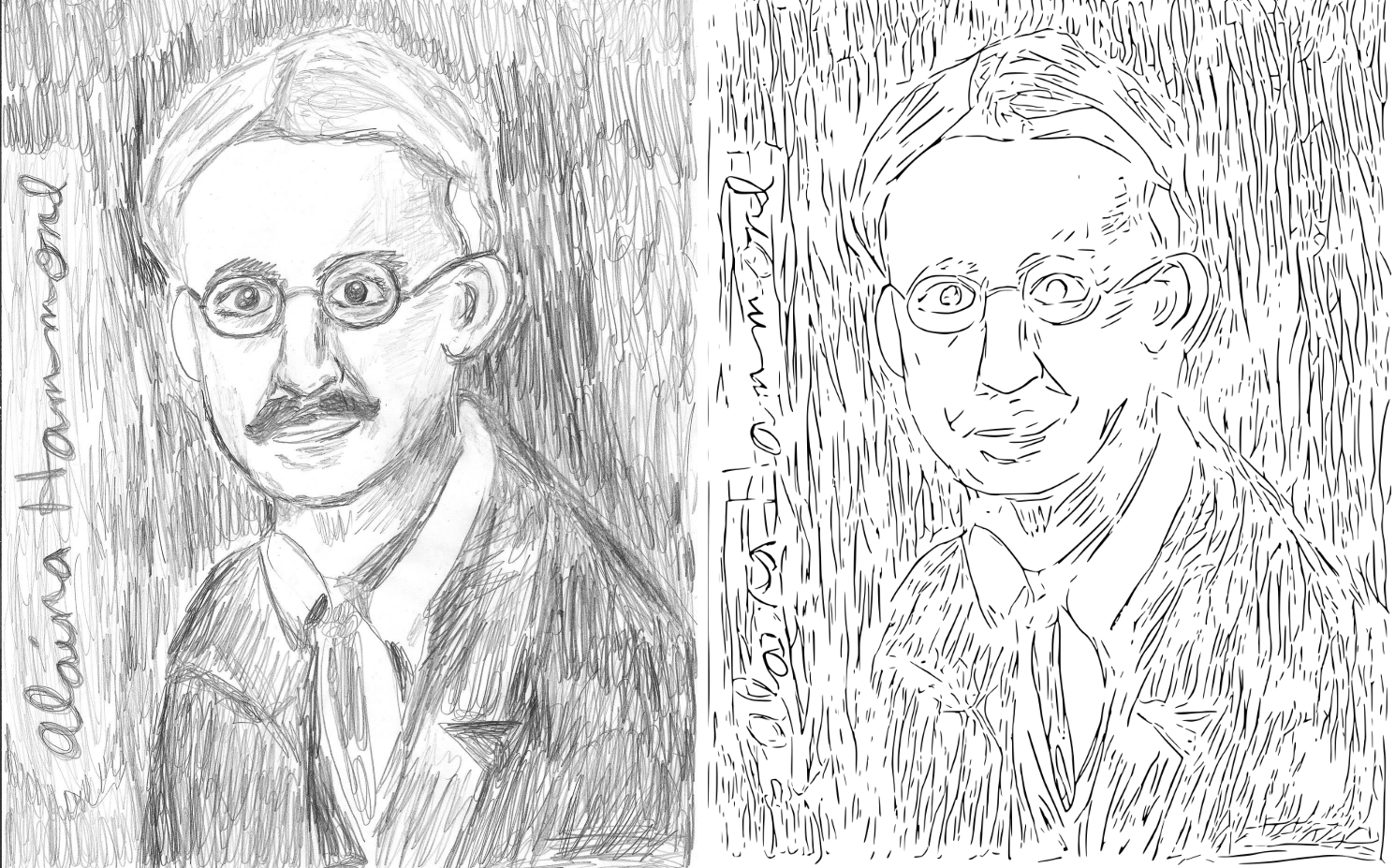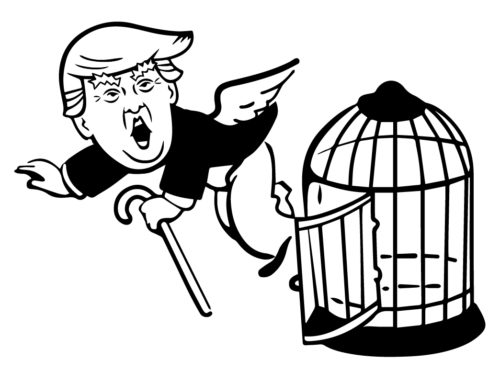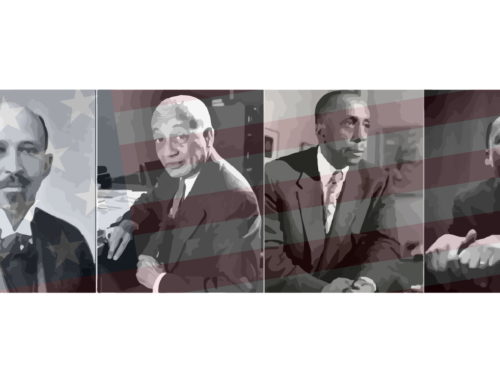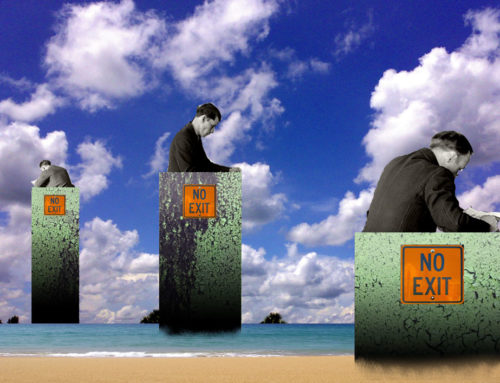By: Alaina Hammond
John Dewey (1859-1952) was perhaps the leading educational philosopher of the early twentieth century, and viewed humanity as a creative force when interacting with its environment. His 1934 book, Art As Experience, expounds upon this belief system.
A large part of Dewey’s purpose in writing this book seems to be saving art from the pedestal of the museum. “The factors that have glorified fine art by setting it upon a far-off pedestal did not arise within the realm of art nor is their influence confined to the arts” (p. 4). The word “glorified” used here in a derogatory sense is parallel to his dismissal of the Platonic ideals of beauty. To glorify something is not to improve it, or even to elevate it in anything but an artificial sense. Rather, it is to imbue it with a false identity of the ethereal, or the other.
Moreover, there is no formal art that is inherently superior to the other. To use a contemporary reference, a graphic novel is not less noble, or automatically worse, than a literary one. If both are well-written (and in the former case, drawn) they should be judged on their own merits rather than compared to each other. On the other hand, as television is not inherently worse than literature, a good show surpasses a badly written book.
Dewey examines the specifics of art’s place in the world. He wonders: If artists are a kind of interpreter, are they interpreting the world to themselves? Or interpreting something to something else? What are they doing, besides participating in the physical process of making art with physical materials found in space-time?
According to Dewey, what transcends the physical materials is what constitutes art. Paint and canvass becomes paint-and-canvass, thus a painting, when a human manipulates it so. And yet art does not, itself, transcend the physical world—unlike metaphysics-based philosophers, Dewey believes that art is very much tied to the physical world.
So, the paint must always have the potential to be a painting. In contrast to those who believe in the teleology that the paint contained the “essence” of the painting, that its destiny was always to grow into its ultimate self, Dewey argues that that soul of the art was infused by the strokes of the painter. It must therefore have been created by the strokes the artist chose not to take—or accidentally did not take—more than it was latently, theoretically present in the painting’s fetal state of paint.
Art is about communication, to various extents. Unlike a sign (e.g. “Wet Paint”) that only denotes specific, didactic information, the line between what the art is and what the art is doing is nearly impossible to differentiate. This bears passing similarity to the Greek concept of “being-at-work-staying-itself,” suggesting that art’s function is to be art. This becomes a kind of tautology: Art’s purpose is to be art; so art’s purpose is to be. Being and doing become—for art—one and the same. Unlike a plumber who is still a plumber when she’s sleeping, or a painter when she isn’t painting that very second, art can never not be art. Because art is boundless in its meaning—in the minds of those who view it—it therefore stands to reason that it must also be boundless in its function.
This ties to the idea that space-time are inseparable. Dewey says, “While the emphasis of the plastic arts is upon the spatial aspects of change and that of music and the literary arts upon the temporal, the difference is only one of emphasis within a common substance” (p. 216). So are art and art-as-experience in constant conjunction. There is no “art” if that art is not experienced as being art, either by the artist or the viewers. Even complete, then, art is a practice. So the experience is itself a kind of substance, though not perhaps substance as we are used to thinking of it.
We see a cardboard box, or silly putty, and according to the ideals of chemistry class label that as “substance.” In fact, according to the above passage, the interaction and recognition of the physical objects in space is as substantive as the matter itself. There is no Platonically pure eternal time that exists any more than there is any Platonically perfect form of art. Our interactions in what we perceive as time and space are as much special as the things contained therein.
Dewey rejects the metaphor of container and content (space and time, respectively). As we perceive things changing in comparison to ourselves, the quality of that change is space-time.
This suggests that as we move through space-time, our ability to see, recognize and create what is aesthetically valuable becomes more defined. Not only because we can compare objects to each other and refine our sense of what is more or less beautiful, but because the internalized perception of the world is in better focus. However, Dewey seems to think that this internalized perception must not become corrupted by outer, excessively philosophical, conceptual elements. To that extent, an art history class might imbue one with more factual, didactic knowledge but also more removal from the art-as-being-itself. As he explains on page 232, “if…we regard such terms as picturesque, sublime, poetic, ugly, tragic, as marking tendencies, and hence as adjectival as are the terms pretty, sugary, convincing, we shall be led back to the fact that art is a quality of activity. Like any mode of activity, it is marked by movement in this direction and that.”
So it seems Dewey is wary of relying too heavily on descriptors as dictators. Just as recalling a memory as fact over and over again might eventually wear down our visceral recall of the sensations in favor of a more narratively coherent one, so do adjectives dull the thing-in-itself. A painting I feel the impulse to describe as beautiful tends towards beauty, makes “motion” toward beauty. But it’s itself, rather than its static label. In this way, it might very well be more beautiful than “beautiful” implies. Dewey says, “no genuine work has ever been a repetition of anything that previously existed” (p.300). Though language is bountiful, and artistic in its own way, there will surely be more works of art than there are specific descriptors of the art itself. Therefore, even by labeling a piece of art as beautiful, you have linked it to other “beautiful” pieces of art and therefore done it a kind of disservice.
There is nothing otherworldly about art. The world is artistic enough as it appears, the clouds—and the paintings of clouds—as heavenly as any exalted, romanticized notion of Heaven. In fact, this mystical treatment of the arts makes the art itself less intense, less artistic, gets in the way of its job. Art as status symbol reduces it to a commodity, to something mundane. By revealing that art is not an obscure language, or anything less accessible than words on a page, words on a stage, fingers hitting string or strokes on canvass, he’s re-centering art. Dewey wants the emphasis to be in space-time, not in the abstract.
Because Dewey seems fond of dismissing dualities, it makes sense that he never specifically proscribes what is and what is not art, or good art. And yet, common sense dictates that a beautiful piece of music, no matter how good it is, is not, nor ever could be, nor ever should be, a painting. Were a student to submit it to a painting teacher in a painting class, the value of the work notwithstanding, the painting teacher would be justified in delivering an unsatisfactory grade. The requirements of distinct art are relatively clear, if we see space-time as one. A painting moves through space-time differently than a play, even differently than a photograph, for the physical dimensions are distinct. Art exists largely by means of its dimensions, its context relative to human beings. If we heard all notes ever sung or played as simultaneously being performed, we would not be able to differentiate one symphony from another. So too is visual art defined, in a way, by its literal and figurative frame. Dewey does not need to tell us what isn’t art, because that’s unnecessarily general. The painting is. The symphony is. The movie is. All these things exist and move with us through space-time.
Returning to the question of art’s place in the world, Dewey considers the problem of cultural divide, which occurs when art is viewed as excessively lofty or elite. Tying this idea to the notion that art must not be kept too much in a museum, both literally and figuratively, the low-art vs. high art dichotomy is dismantled. An effective piece of art works (works in every sense, being-itself-staying-the-same and also aesthetically “works” to the viewer) regardless of what category it aligns with. And though Dewey points out that no piece of art is the same as any other piece of art, there might be something similar in pieces of art that work, no matter what their genre. This is a different kind of universal than Plato described. Unlike Plato, Dewey puts his faith in the church choir to be the holiest thing in the room, rather than to remind the listeners of a higher, abstract beauty separate from the one they’re experiencing in space-time. Still, there’s a kind of recurrence in good art, similar themes or figures revisited.
Might humans, then, collectively, get better at art the longer civilization exists? More pieces of art added to the canon would increase our database. Just as an individual hones his creative taste over time, so might the collective consciousness evolve into better and better collectors and creators of art, so long as we don’t get too pedantic in our descriptions of what constitutes the canon. Then again, according to Dewey, “it is simply impossible that anyone should experience the Parthenon as the devout Athenian contemporary citizen experienced it…” (p.113). We might therefore have to re-learn what we have forgotten, to in essence rediscover old treasures with fresh eyes.
The Parthenon is an interesting example for Dewey to use because, in addition to its aesthetic beauty, it also served a specific, practical function. Similarly, to what extent, and how, can art be used in correlation with philosophy (or other social sciences)? Though some pieces of art are more directly didactic and philosophical than others—plays by Sartre, for example—there’s a difference between a philosophical tool and a genuine piece of art. There might be something paradoxical and poetical in the very nature of the philosophy that cannot be best expressed in a lecture, because the subtle variations and contradictions require characters with unique “voices” to properly express the philosopher/playwright’s somewhat conflicted intention. Just as clay might “mold” the hands of the sculptor as much as he molds the clay, the playwright might also find clarity and insight by writing the play that he did not have when it was but an impulse. “Aha, that’s what I meant!” is a common refrain among artists. It might even have shaped Dewey in the writing of this book.
What about Plato’s dialogue “The Symposium,” then? Is it better understood as a philosophical work that happens to take the form of dialogue, or as a play with extremely philosophical content and didactic, relatively non-artistic form? There’s a concept called the principle of generosity, which is similar to Occam’s Razor. If The Symposium works better as a “book” than as a play, we should read it as a book. If it’s more elegant and perhaps more understandable as a play, we should see it performed. The form of the art matters in shaping our perception of it. Dewey could not instill us with the information found in his books except by writing them.
Art is distinct from nature—that is, the non-man-made world, the weather, the rocks, etc.—inasmuch as it was made by human design. Whether one sees a certain elegance in nature, and attributes that elegance to a creator, it’s clear that human beings experience human art differently than they do the rest of the world. While one might find a mountain artistically beautiful, or be inspired to paint it, very few people would actually confuse a painting of a tree with a tree itself. So there’s something human, something recognizably human, in art. We must see a bit of ourselves in it, even if its contents don’t depict anything directly related to humanity. Paintings by intelligent gorillas aside, art is the thing that only humans do. Although, perhaps if Dewey had lived long enough to see gorillas paint, he might have seen that as humanizing them. To paraphrase Shylock, Shakespeare’s Jew: Hath not a gorilla the ability to paint?
“Art is thus prefigured in the very processes of living. A bird builds its nest and a beaver its dam when internal organic pressures coordinate with external materials so that the former are fulfilled and the latter are transformed in a satisfying culmination.” Here, Dewey suggests that the completion of art is an extension of the human will to live, and to express itself. He draws comparisons to animals’ process of functional creation. Going back to the example of the Parthenon in its grand beauty, was the first wheel a piece of art, even though it was also a tool?
To a certain extent, it might have been. If we see physical motion-based beauty as something symmetrical, harmonious, graceful, than the wheel helped humans to move in a more “artistic” way. Perhaps the relative effortless of wheeling their dead animals rather than carrying them ultimately contributed to the evolution of dance. But there must have been a distinction between someone making a more perfectly circular wheel and someone drawing circles in a cave, on the ground. Not to warn their neighbors of attack (the ancient equivalent of “wet paint”), but to create something for the sake of creating it. Something that had never existed before in all of human incarnation. To Dewey, this seems critical to our humanity. Let the scientists carbon-date the missing link; it’s whenever, wherever (same thing, in space-time) we sang for joy and not warning. If the song sounded no more beautiful than the warning call, so be it; the intention absolutely matters. Dewey would not have wanted ancient man to separate into the equivalent of uppity opera singers and plebeians any more than he wanted their descendants to do so.
As Dewey is fond of dismantling dualities, allowing for a more nuanced philosophy – itself an intellectual form of art – so does his approach to art seem to rectify the apparent disconnect between thinking and feeling. His method involves a unique kind of pragmatism, one that is emotionally expansive, with purpose beyond utility and room for multiple interpretations of beauty.
Art is the work of humans to do, and to see. Aesthetics is what binds us to each other, and to art. Even if our individual tastes differ, the fact that we implicitly understand the concept of “taste” means that it’s a crucial part of human identity. Art is essential to the human experience; the human experience is an art unto itself.
All citations refer to the 2005 edition: Dewey, J. (2005). Art as experience. New York: Penguin Group. (Original work published 1934)
Alaina Hammond is an artist based in New York City. She has a Master of Arts in philosophy and education from Teachers College, Columbia University.
Image: Portrait of John Dewey. On the left, a pencil sketch by the Author. On the right, the same image simplified by a neural network, created by Edgar Simo-Serra, Satoshi Iizuka, Kazuma Sasaki, and Hiroshi Ishikawa. In one respect, a duality; in another, highlighting the human element in both.










Leave A Comment